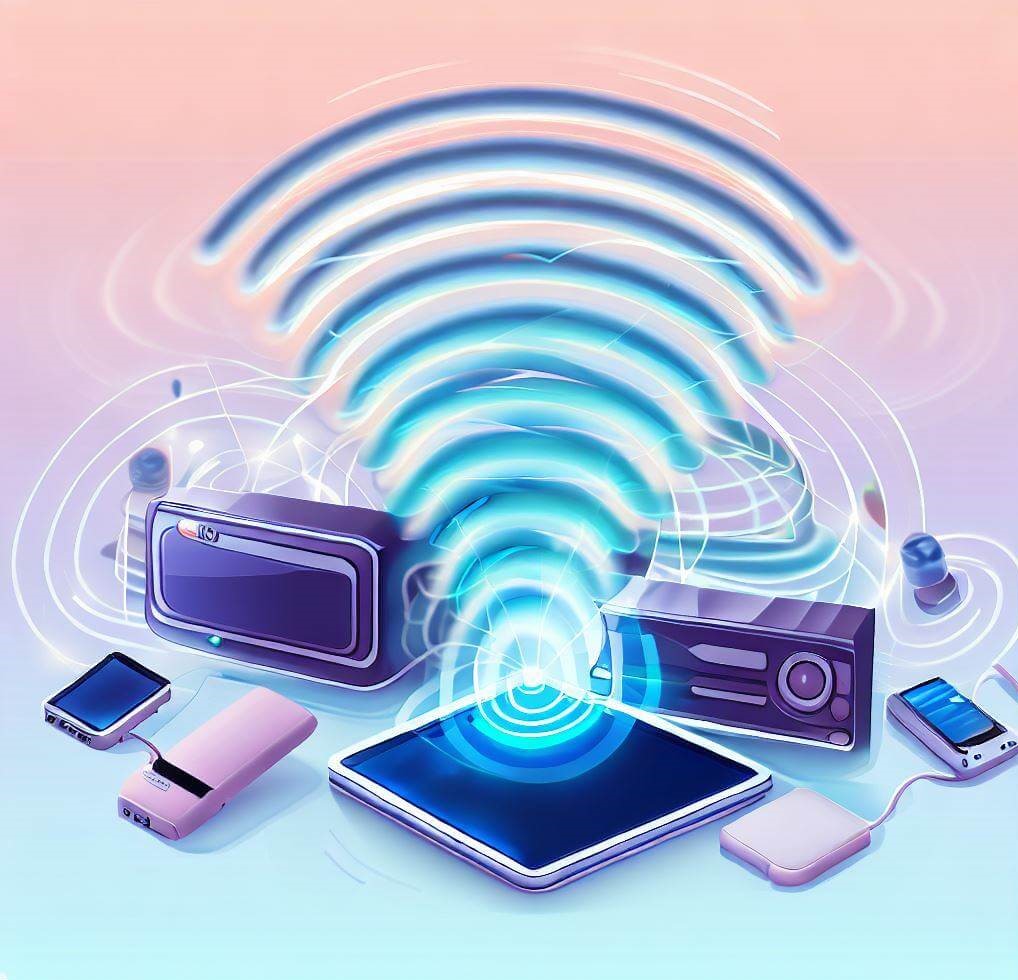Introduction
Hello, fellow EMF enthusiasts! Today, we’re going to venture deep into the uncharted waters of electromagnetic fields (EMFs) and their impact on health. This is a topic that’s close to my heart, and I’m eager to share with you the hidden truths about EMF Health Risks that many of us are not aware of.
Understanding EMF
To understand the health risks posed by EMF, we first need to understand what EMF is. Electromagnetic fields or EMFs are areas of energy that surround electronic devices. They are created by differences in voltage and magnetic fields generated by the flow of electric current.
EMFs are categorized into two types: Low-level (non-ionizing) radiation and high-level (ionizing) radiation. The low-level radiation consists of extremely low frequency (ELF) like those from power lines, Wi-Fi, cell phones, and household appliances. On the other hand, high-level radiation comprises ultraviolet (UV) rays and X-rays, which have more energy and can potentially cause harm to our bodies.
The Common Sources of EMF
EMF is omnipresent in our modern world. It’s emitted by numerous everyday gadgets and appliances. Here are some common sources of EMF that you encounter:
- Cell phones and tablets: These devices emit radiofrequency radiation when they connect to cellular networks.
- Wi-Fi routers and Bluetooth devices: These gadgets produce radiofrequency radiation to communicate wirelessly.
- Microwave ovens: Microwaves generate EMF to heat food.
- Household appliances: Items such as televisions, refrigerators, and hairdryers all produce some level of EMF.
Whether we like it or not, we’re constantly surrounded by EMFs. But the million-dollar question is, what impact does this exposure have on our health? Let’s dig deeper into the health risks associated with EMF.

Unveiling the Health Risks Associated with EMF
Now, onto the most important question: are EMFs harmful? Scientific studies have suggested several potential health risks that may be associated with EMF exposure. Here’s a look at some of them:
- Cancer: Some research suggests that long-term exposure to high levels of EMF might increase the risk of certain types of cancer, such as leukemia and brain cancer. However, it’s crucial to note that these findings are not definitive and further research is needed.
- Neurological Effects: Exposure to EMFs can lead to changes in brain activity. According to a study published in the Annals of Neurosciences, EMF exposure can cause neurological changes resulting in sleep disorders, depression, and anxiety.
- Effects on Childhood Development: Children’s brains are still developing, making them more susceptible to any adverse effects of EMF. Studies have shown an association between EMF exposure and behavioral issues in children.
- Effects on Fertility: EMF radiation could negatively impact sperm quality and fertility, according to some studies.
It’s important to note that while these studies suggest potential risks, many other studies have found no correlation between EMF exposure and these health conditions. As with any scientific study, further research is needed.
The Science Behind EMF and Health Risks
As you might expect, there’s a lot of science behind how and why EMF can affect our health. Our bodies themselves produce electrical impulses (think about how the heart works), and any external EMF can disrupt these processes.
EMFs interact with the body in different ways. One of the main ways is by inducing currents within the body. The strength of these currents depends on the intensity of the external magnetic field. If sufficiently large, these currents could cause a variety of biological effects.
EMFs, particularly those from wireless devices, can cause heating effects. This is the principle by which microwaves heat food. Exposure to very high levels can result in a heat-induced burn or other injury.
EMF Exposure: Understanding the Intensity and Duration
How EMFs impact your health also depends on the intensity and duration of exposure. Brief exposure to a high-intensity field might have a different impact than long-term exposure to a low-intensity field.
Scientists use the term ‘dosage’ to refer to the amount of EMF an individual is exposed to. Dosage is a combination of the field’s strength and the length of exposure. Simply put, a stronger field or longer exposure time increases the dosage, and potentially, the risk.
High-Risk EMF Sources in Everyday Life
With an increasing number of electronic devices in our lives, it’s essential to know which ones emit high levels of EMF. While almost all electrical devices produce some EMF, certain items generate particularly high levels. These include:
- Microwave ovens: While in use, they emit a significant amount of EMF. However, the radiation levels decrease rapidly with distance.
- Mobile Phones: They’re a source of RF-EMF, and since they’re often held close to the body, they can be a concern.
- Wi-Fi Routers: As with mobile phones, Wi-Fi routers emit RF-EMF. The exposure levels would typically be less than a phone, but it could be a concern if you’re very close to the router for extended periods.
The keyword is distance. The intensity of the EMF decreases rapidly as you move away from the source. This phenomenon is known as the inverse square law.

Reducing Exposure to EMF
The potential health risks associated with EMF exposure underline the need for preventive measures. Here are some steps you can take to reduce your exposure:
- Increase Distance: As mentioned earlier, moving further away from the source can dramatically reduce your exposure.
- Limit Usage: Reducing the time spent on devices like mobile phones can also lower exposure levels.
- EMF Shielding: There are numerous products available that can block or reduce EMF, such as shielding paint, fabric, and pendants. However, it’s essential to research and choose products wisely, as their effectiveness can vary.
Potential Health Impacts of EMF Exposure
The exact health risks associated with EMF exposure remain a topic of extensive research. However, several studies suggest potential risks, especially with prolonged exposure. Here’s a look at some of the health impacts:
Sleep Disturbances: Studies have shown that high levels of EMF exposure can lead to sleep disturbances. This could be due to the impact of EMF on the production of melatonin, a hormone that regulates sleep.
Neurological Effects: Some research suggests that EMF can have various neurological effects, causing symptoms like headaches, fatigue, and difficulty concentrating.
Cancer Risks: While more research is required, some studies have suggested a potential link between long-term high-level EMF exposure and certain types of cancer, including leukemia in children and brain cancer in adults.
Interpreting the Scientific Evidence
Given the mixed results and ongoing debates in the scientific community, interpreting the research on EMF health risks can be challenging. It’s crucial to understand that many factors can influence these studies’ results, including the type of EMF, the intensity and duration of exposure, and individual health status.
That said, given the potential risks and our growing reliance on electronic devices, adopting a precautionary approach to EMF exposure makes sense. The key is to balance the benefits we derive from these devices with steps to minimize potential harm.
The Future of EMF Research
As we continue to become more digitally reliant, the need for comprehensive EMF research is undeniable. Despite the various studies conducted thus far, much is left to be explored regarding EMF and its potential health impacts.
Long-term Implications: Currently, one of the significant gaps in our understanding pertains to the long-term implications of EMF exposure. Most research up to now has focused on short-term exposure, often in lab settings. However, in our everyday lives, we’re exposed to EMF for prolonged periods, often from multiple sources. Understanding the cumulative impact of such exposure is a critical area for future research.
Varied Sources of EMF: Another area that requires more exploration is the differential impacts of various EMF sources. With the proliferation of wireless technologies and the advent of 5G networks, we’re being exposed to higher-frequency EMFs than ever before. Understanding how these high-frequency EMFs impact our health is a pressing concern.
Individual Variability: Lastly, there’s a need to understand why some individuals seem to be more sensitive to EMF than others. EMF sensitivity, sometimes referred to as electromagnetic hypersensitivity (EHS), is a condition where individuals experience symptoms like headaches, anxiety, and sleep disturbances upon exposure to EMF. However, EHS is not yet fully understood and requires further investigation.
By filling these gaps in our knowledge, we can better understand the potential risks of EMF and guide regulations to ensure public health safety. Until then, being informed and taking a precautionary approach in managing our EMF exposure is the most sensible course of action.

Conclusion: EMF – A Balancing Act
As we navigate through an increasingly digital world, understanding and managing EMF exposure becomes ever more essential. While EMFs are a byproduct of the technology that powers our daily lives, being aware of their potential health impacts is crucial. The good news is, through knowledge and preventive measures, we can significantly reduce our exposure and safeguard our health.
FAQs
Q1: What is EMF?
A1: EMF stands for electromagnetic fields, which are invisible areas of energy produced by electrically charged objects.
Q2: Where do EMFs come from?
A2: EMFs come from both natural and man-made sources. Natural sources include the earth’s magnetic field, while man-made sources include electrical devices, power lines, and wireless communications.
Q3: What are the potential health risks of EMF?
A3: Some studies suggest that high-level, long-term exposure to EMF can lead to health issues such as sleep disturbances, neurological symptoms, and possibly certain types of cancer. However, more research is needed to fully understand the risks.
Q4: How can I reduce my exposure to EMF?
A4: You can reduce your exposure by increasing your distance from EMF sources, limiting the time spent using certain devices, and using EMF shielding products.
Q5: What is the inverse square law in relation to EMF?
A5: The inverse square law refers to the fact that the intensity of an EMF decreases rapidly as you move further from the source. Therefore, even a small increase in distance can significantly reduce your exposure.

